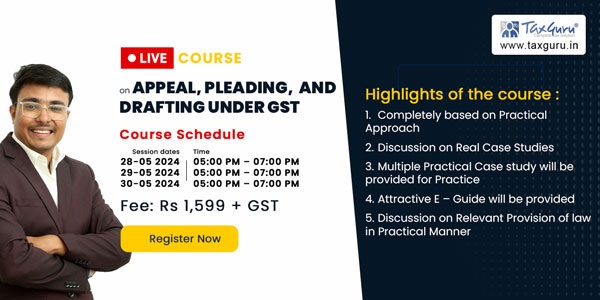“Explore Social Auditing Standards (SAS) 1500, a strategic tool addressing the digital divide, misinformation, and data protection. Uncover its significance in bridging the digital gap, countering misinformation, and upholding data privacy. Delve into the auditing process, key metrics, challenges, and the crucial role of impact assessment. Gain insights into the evaluation criteria, both qualitative and quantitative, along with challenges, areas for improvement, and limitations. As data becomes ‘the new oil,’ understand the importance of SAS 1500 in ensuring equitable digital access and combating misinformation for a more inclusive and secure digital world.”
In the era of rapidly advancing technology, bridging the digital divide and addressing issues of misinformation and data protection have become paramount. The introduction of Social Auditing Standards (SAS) 1500 seeks to provide a structured approach to assessing and improving these critical aspects. This article delves into the SAS 1500, shedding light on its objectives, auditing process, key metrics, challenges, and the importance of impact assessment.
The Significance of SAS 1500
SAS 1500 is not just another set of auditing standards; it is a strategic tool designed to address the challenges posed by the digital divide, misinformation, and data protection. Let’s dive deeper into why these standards are so crucial in today’s context:
1. Bridging the Digital Divide: The digital divide is a multifaceted issue that encompasses disparities in access to the internet and mobile phones, variations in digital literacy levels, and the unequal distribution of benefits from ICT. SAS 1500 acknowledges that bridging this divide is not just a matter of providing access; it involves leveling the playing field, ensuring that all segments of society have equal opportunities to harness the benefits of the digital world.
2. Combating Misinformation: In an age where information spreads like wildfire, combating misinformation has become a top priority. Misinformation can have far-reaching consequences, from public health crises fueled by fake news to social unrest triggered by false narratives. SAS 1500 recognizes the role of social enterprises in countering this trend and underscores the need for their impact assessment in this regard.
3. Data Protection and Privacy: With the increasing digitization of our lives, personal data has become a valuable commodity. Data breaches and privacy violations have raised concerns about the security of individuals’ information. SAS 1500 emphasizes that data protection and privacy should not be considered exclusive luxuries but fundamental rights that must be upheld and safeguarded for all, particularly for disadvantaged communities.
Process of Social Audit
The SAS offers insightful advice on who the Social Auditor(SA) should contact in order to gather data for its effect assessment assignment, including but not limited to:
- Direct beneficiaries
- Immediate family members of the beneficiaries
- Trainers imparting knowledge/ training/ awareness
- Service providers
- Funding entities, Government and related institutions
- Monitoring Agency
When conducting surveys and collecting sample data, the following factors should be considered to assess relevance and reliability:

- designed by in-house team or external specialized agency
- conducted by in-house team or external specialized agency
- number of days taken
- number of teams formed
- number of manpower deployed
After data collection, the SA should thoroughly review the data, which can include conducting physical inspections and one-on-one interviews to better understand the situation.
Evaluation question
The social audit process under this SAS involves the SA asking key questions of themselves and the people involved. These questions form the foundation of the Social Impact Assessment Report. These questions could include:
A. Composition of the participants
-
- Whether the program objectives were found to be consistent with the composition of the beneficiaries?
B. Quality of benefits provided
-
- Were the beneficiaries satisfied with the services that they received?
- How was the quality of engagement with beneficiaries?
- Has the digital divide been bridged?
- Are beneficiaries better informed about their rights, entitlements, and the policies and schemes that affect them viz. BharatNet project, National Digital Literacy Mission, Pradhan Mantri Gramin Digital Saksharta Abhiyan, The Gyandoot Project in the state of Madhya Pradesh, FRIENDS Project in the state of Kerala, E–Chaupals Project in few states of India, etc.?
C. Suggestions / Feedback
-
- What were the constraints or challenges faced in providing the services/ programs?
Likewise, there are many other questions that need to be identified by the SA.
Key Metrics: Framing and Assessment
The SA will follow the results of this evaluation in coming to their report’s conclusion. They will be able to evaluate the performance of the social enterprise based on its social impact after collecting all the data and analyzing the important parameters. These grading inquiries could cover the following topics:
- What would have happened in the absence of the intervention?
- How much the project contributed to the changes that are evidenced?
- How much unintended negative impacts happened due to the intervention?
Assessment of evaluation criteria
The Social Auditor needs to recognize evaluation criteria of both Qualitative and Quantitative for assessing the impact.
Some key aspects that can be considered as evaluation criteria are listed below:
Quantitative
- Number and amount of deployment of electronic devices including mobile devices along with demographical and geographical bifurcation
- Number of Internet users and data consumption along with demographical and geographical bifurcation
- Number of Digital literacy programmes conducted and number of attendees along with demographical and geographical bifurcation
- Amount spent on creating technology infrastructure along with demographical and geographical bifurcation
- Number of cyber club’s set-up and number of beneficiaries along with demographical and geographical bifurcation
- Amount spent on providing uninterrupted internet connectivity and number of beneficiaries along with demographical and geographical bifurcation
- Number of beneficiaries from E-pathshalas along with demographical and geographical bifurcation
- Current and historical number of data security breaches based on the total population susceptible to such breach
- Current and historical number of times information is inaccurately spread based on the total population
- Number of broadband connections and number of beneficiaries along with demographical and geographical bifurcation
Qualitative
- Improvement in Digital Divide – Increased digital literacy, reduced spread of misinformation, reduced data breaches, increased cyber security may be used to assess the improvement in digital divide.
Challenges/ Areas for improvement
Based on their suggestions and input, which may have an impact on the impact assessment, the stakeholders’ difficulties and areas for improvement should be identified by the social auditor.
- Costly investments and infrastructure
- Lack of digital literacy and skills
- Resistance to change due to tech savvy operations
- Language barriers
- Gender gap in access to digital devices
- Rapid spread of incorrect information without verification of facts
- Data security breach
Limitations
- Cases of no-response in case the questionnaire is not administered in person
- Some of the questions being skipped by the respondents and remaining unanswered
- Non-availability of respondents due to relocation to other places after completion of the course
- Change in contact details of respondents due to which they could not be contacted
Any significant challenges or limitations observed must be highlighted by the SA in their report.
My Remarks,
In an age where data is often referred to as “the new oil,” ensuring equitable digital access and combating misinformation are critical imperatives. The Social Auditing Standards (SAS) 1500, focusing on bridging the digital divide, misinformation, and data protection, provide a structured framework for achieving these goals. As Social Auditors, it is essential to evaluate the impact of social enterprises in addressing these challenges, making digital access available to all, and safeguarding the integrity of information in our increasingly digital world.





























